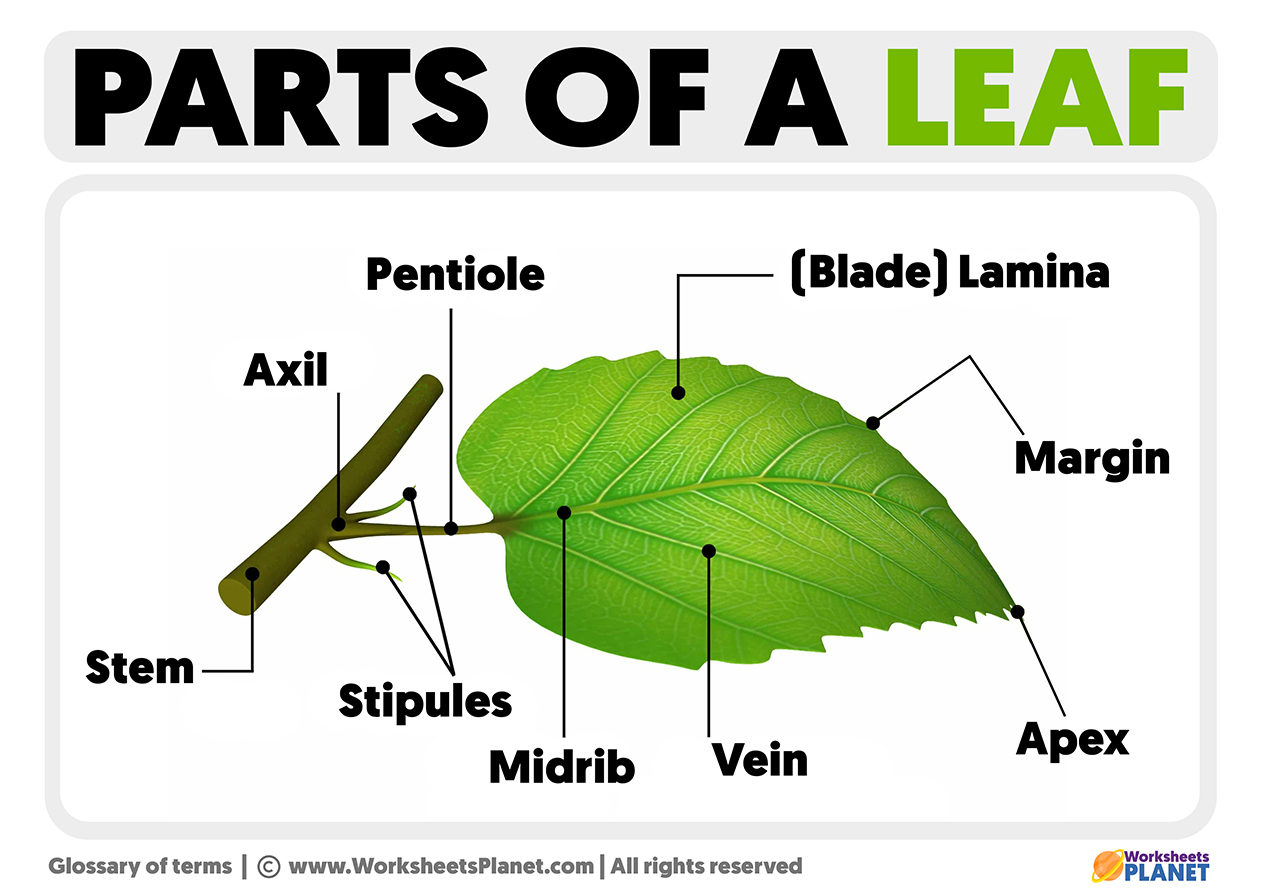The leaf (from the Latin folium) is one of the essential parts of vascular plants. Leaves carry out photosynthesis on plants. Leaves are laminar or acicular structures that sprout laterally from the stems or branches. Leaves have limited growth and contain mainly photosynthesizing tissue, always located within reach of light. In addition, the leaves are responsible for carrying out other functions such as transpiration and respiration. Leaves can also store water or do other purposes.

Functions of a Leaf
Leaves carry out several functions in the plant, such as photosynthesis, respiration, or transpiration. These functions can also be carried out by the herbaceous stems and the young portions of the woody stems. In some plants that lack leaves, such as cacti, the stems perform these functions.
Parts of a Leaf
- The limbus appears traversed by tubes or ducts called nerves, which perform a conductive function and provide mechanical support to the leaf. These tubes are the continuation of the plant’s conducting system to the leaf.
- In most leaves, the two sides of the leaf blade have slightly different colors, feel hairiness, etc.
- The side exposed to the sun, usually darker green is called the upper part, while the opposite is called the lower part.
- The upper end of the leaf is called the apex.
- Some leaves are present at the base of the petiole with small laminar expansions similar to small leaves, called stipules.
- The leaves do not always present both parts described. Sometimes there is no petiole, and the blade inserts directly into the stem. In this case, we speak of sessile leaves.

